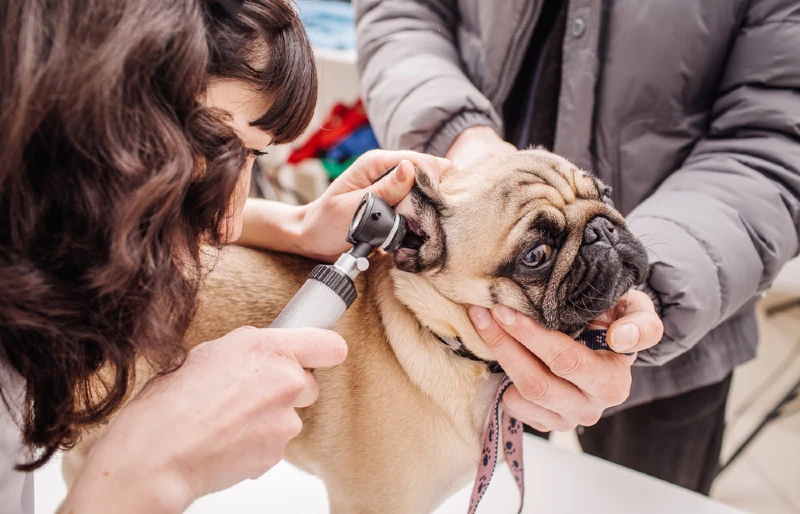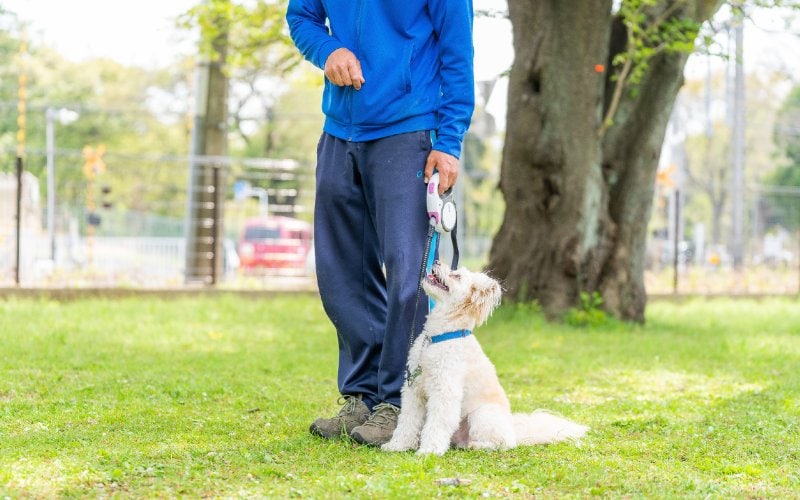Are There Hearing Aids for Dogs? Vet Approved Facts & FAQs
By Adam Mann
Updated on

If your dog struggles to hear things, they’re far from alone. It’s a common ailment for older dogs, and sometimes even younger dogs have trouble hearing because of genetic reasons.
If that sounds like your pup, you’ll want to know about your options. And while there are no dog-specific hearing aids that you can just buy, a vet may be able to custom adapt human hearing aids to work for your dog. It’s a bit of a process, but we’ll walk you through everything you need to know about it and give you some other helpful tips on how to deal with your dog’s hearing loss.
Getting Your Dog Hearing Aids
Hearing aids are sound amplifiers. Dogs require a certain amount of residual hearing for amplification to be effective. The only way to detect hearing loss in dogs is with the BAER (brainstem auditory evoked response) test. This test detects electrical activity in the inner ear (cochlea) and hearing nerves (auditory pathways) in the brain and will provide an answer to whether your dog can or cannot hear in one or both ears. A good candidate for a hearing aid must have some hearing detected by the BAER test. Note that most practices do not have the equipment, but your vet will tell you where to go if you wish to have your dog tested.
Therefore, if your dog is experiencing hearing loss and needs a hearing aid, leave it up to their vet to check them, make that determination, and fit them for hearing aids if they are good candidates. Trying to do it yourself with over-the-counter hearing aids can make the problem worse and lead to severe discomfort or worse for your pup.
Take your dog to the vet where they can confirm the deafness diagnosis and present you with the proper treatment options. The process of custom-adapting hearing aids for your dog is expensive and complicated. Furthermore, the reality is that most deaf dogs don’t seem to be bothered by their deafness and adapt quite well to relying on their other senses.

The 5 Other Ways to Cope With Your Dog’s Hearing Loss
If you decide not to get hearing aids for your dog suffering from hearing loss, there are a few other things you can do to help your dog cope. We’ve highlighted five great options at your disposal here:
1. Hand Signals
Just because your pup can’t hear doesn’t mean they can’t see or that they don’t want to listen! The perfect solution for a lot of situations is hand signals. If your pup is looking at you and they recognize what you want them to do, they should listen even if they can’t hear you.
It will take a bit of time and work to train your dog with some hand signals, but with a bit of consistency and persistence, you can certainly do it.
2. Keep Them Safe
When a dog loses their sense of hearing, it’s far more likely that they’ll wander into situations they shouldn’t. They can hear oncoming traffic, they can’t hear you calling for them, and they can’t hear anything else that might keep them safe.
This means you’ll need to take extra precautions to ensure nothing happens to them. This includes only letting them out in a fenced-in yard and keeping them on a short leash when you’re on walks.
3. Find Unique Ways to Get Their Attention
If your dog can’t hear you can’t just yell out their name to get them to look at you. You’ll need to get creative, and there are a few different ways you can do this. Some owners choose to flick the lights on and off in a room while others stomp on the floor so their dog can feel it.
You’ll need to find something that works for you and your situation, but just because they can’t hear you doesn’t mean you can’t find another way to get them to look at you!

4. Avoid Startling Them
When your dog can’t hear anyone coming up behind them, it’s pretty easy to startle them even when you’re not trying to. But you never know how a scared dog will act, and it’s up to you to take a few extra precautions so you don’t scare them.
This could be as simple as walking in front of them before interacting with them or something more complicated, like flicking the lights, so they know you’re there!
5. Talk to Your Vet
Whether you’re considering hearing aids or something else to help your pup cope with hearing loss, your dog’s vet can walk you through all the medical options at their disposal and recommend services that might open up even more options for you.
It’s the vet’s job to help you come up with the best possible solution for your dog, and if you give them a chance, they can help you come up with some great solutions.
Final Thoughts
Unfortunately, canine deafness isn’t all that rare of a problem, especially as your pup gets a bit older. But it’s also just as unfortunate that there’s not a dog-specific hearing aid on the market. Since vets need to custom-make hearing aids for dogs, it drives up the price quite a bit, and pet insurance plans usually won’t cover it.
Still, if you’re willing to drop the money for them, they do exist, and if not, there are some other ways you can help your dog deal with canine deafness.
Related read:
Featured Image Credit: PRESSLAB, Shutterstock











